Hey there! We are diving into the world of "Paid Advertising Channels and Platforms" – a module that's all about maximizing your impact through strategic paid promotions.
But before we set sail on this advertising adventure, let's take a moment to reconnect with your trusty guide, "The Roadmap to Success." Think of it as the compass that keeps you on track, making sure every marketing move you make aligns with your goals, aspirations, and the incredible journey you are on.

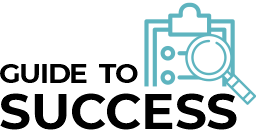
Remember to transform your aspirations into executable strategies throughout the sections of this module and write them down in your "Guide to Success."
As you tackle paid advertising, remember that every campaign, every ad you design, and every platform you choose is like adding a layer to your digital masterpiece. Your roadmap isn't just a roadmap; it is your strategic partner, urging you to turn your dreams into actionable steps.
Get ready, because this chapter is about turning roadmap principles into impactful marketing action in the exhilarating world of paid advertising.
Now, paid advertising channels and platforms offer plenty of benefits for scientific illustrators. Let's dive into some of the key advantages:
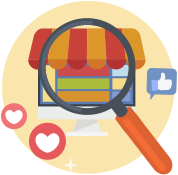
Increased Visibility:
Paid advertising puts your artwork right in front of potential clients and fans who may have never stumbled upon it otherwise. It's like shining a spotlight on your talent, making sure it is seen by a broader audience.
Targeted Reach:
One of the most significant advantages of paid advertising is the ability to target specific audiences. Whether you want to reach biology researchers, medical professionals, or art enthusiasts, you can fine-tune your ads to appear in front of the right people at the right time.
Cost Control:
Don't worry about breaking the bank! Paid advertising allows you to set your budget and control your spending. You can start with a modest investment and scale up as you see positive results.
Immediate Impact:
Unlike some other marketing strategies that require time to gain traction, paid ads can generate immediate results. As soon as your campaign goes live, your artwork can start attracting attention and driving traffic to your portfolio.
Data-Driven Insights:
Most advertising platforms provide detailed analytics and performance metrics. You can see how your ads are performing, understand which ones are resonating with the audience, and use this data to optimize your future campaigns.

Brand Awareness:
Consistent exposure through paid advertising helps build brand recognition. When people see your illustrations repeatedly, they are more likely to remember your name and seek out your work in the future.
Engagement Opportunities:
Paid ads often allow users to engage directly with your content. This could be through a link to your website, a call-to-action button, or encouraging comments and shares on social media. Increased engagement can lead to more followers and potential clients.
A/B Testing and Experimentation:
Paid advertising platforms enable you to run A/B tests and experiment with different ad variations. This helps you find the most effective combination of visuals, messaging, and targeting to optimize your campaign performance.
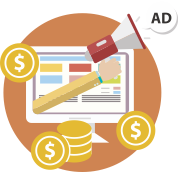
Competitive Edge:
In today's digital landscape, where countless artists are competing for attention, paid advertising gives you a competitive edge. By strategically promoting your illustrations, you can stand out from the crowd and gain a unique advantage.
Flexibility and Customization:
Whether you want to run short-term campaigns for a specific event or have ongoing promotions, paid advertising offers flexibility and customization options that fit your needs and goals.
Conclusion
Remember, each advertising channel and platform has its unique strengths, so it's essential to tailor your approach based on your target audience and objectives. By harnessing the power of paid advertising, you can elevate your scientific illustration career, connect with a larger audience, and take your passion to new heights! So, let's get creative and make your artwork shine with the help of these amazing marketing channels!
Paid Advertising Platforms Relevant To Scientific Illustrators
Paid advertising is an essential component of any successful digital marketing strategy. It allows you to reach potential clients and enthusiasts beyond your current network, maximizing your chances of success. Let's explore some of the most relevant and powerful paid advertising channels for scientific illustrators:
Google Ads:
When it comes to search engine marketing, Google Ads reigns supreme. With Google Ads, you can create targeted ads that appear when users search for specific keywords related to scientific illustration. This means that people who are actively seeking artwork or services like yours will have a higher chance of discovering your work. You can also use Google's display network to showcase your illustrations on relevant websites and blogs, further increasing your visibility.
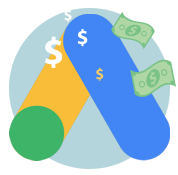
Social Media Ads:
Social media platforms like Facebook, Instagram, Twitter, and LinkedIn offer incredible advertising opportunities. These platforms have vast user bases, allowing you to reach audiences with diverse interests. For scientific illustrators, visual content is king, and social media is the perfect place to showcase your artwork. You can target your ads based on demographics, interests, and behaviors, ensuring that your illustrations are seen by the right people who are likely to engage with and appreciate your work.
Pinterest Promoted Pins:
Pinterest is a unique platform that caters well to visual content and creative niches. As a scientific illustrator, you can leverage Pinterest's Promoted Pins to put your artwork in front of millions of users who use the platform for inspiration and discovery. Whether it's educational infographics or captivating biology illustrations, Pinterest can be a treasure trove for showcasing your talent to a highly engaged audience.
YouTube Advertising:
If you enjoy creating video content alongside your illustrations, YouTube advertising is an excellent option. YouTube allows you to run ads before or during videos, giving you a chance to captivate the viewers with your artwork and encourage them to explore more of your portfolio or visit your website.
LinkedIn Sponsored Content:
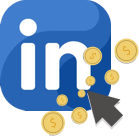
For scientific illustrators targeting a professional audience or looking for collaborations with researchers, institutions, or scientific organizations, LinkedIn's Sponsored Content can be a powerful tool. You can tailor your ads to reach professionals in specific industries or job roles, presenting your illustrations to decision-makers who may require your expertise.
Conclusion
Remember, each advertising channel has its unique strengths and target audiences. As you progress through this course, we'll dive deeper into each platform, exploring best practices, tips for creating eye-catching ads, budgeting strategies, and how to measure the effectiveness of your campaigns.
By leveraging these paid advertising channels effectively, you can elevate your scientific illustration career, connect with the right audience, and turn your passion into a rewarding and thriving profession. So, let's get started and discover the exciting possibilities that await you in the realm of Digital Marketing for Scientific Illustrators!
Exploring The Benefits And Targeting
Options Available On Each Platform
Facebook & Instagram
Facebook and Instagram actually have some shared features when it comes to their paid advertising, probably because they're part of the same platform family. So, let's dive into what they both have in common first. After that, we'll break down the unique characteristics that make each of them stand out:
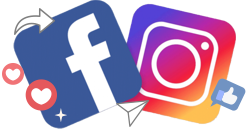
Location Targeting:
Both platforms allow you to narrow down your audience based on specific geographic locations. You can target cities, regions, countries, or even draw a custom radius around a location. This way, you can promote your artwork to people who are most likely to appreciate your work within your desired reach.

Demographic Targeting:
With demographic targeting, you can refine your audience based on factors like age, gender, education, relationship status, and more. For instance, if you specialize in medical illustrations, you can target healthcare professionals or students in relevant age groups.
Interest-Based Targeting:
One of the powerful features of Facebook and Instagram is its ability to target users based on their interests and hobbies. Whether it's biology, art, science fiction, or anything in between, you can connect with people who share a passion for topics that align with your artwork.
Behavioral Targeting:
Facebook and Instagram gather data on user behavior, such as purchase history, device usage, and online activities. This information allows you to target audiences with specific behaviors that match your target market. For example, you can focus on users who have engaged with similar scientific content or have shown interest in scientific education.
Connection Targeting:
You can target people who have a direct or indirect connection to your Facebook page, events, or apps. Additionally, you can choose to exclude those who are already connected to your page, ensuring your ads reach fresh potential fans.

Lookalike Audiences:
Want to expand your reach beyond your current followers? Facebook's lookalike audience feature allows you to find users who share similar characteristics and interests with your existing audience. This way, you can attract a broader audience that's more likely to engage with your illustrations. This feature is also available on Instagram.
Custom Audiences:
If you have an email list or a list of website visitors, Facebook and Instagram let you create custom audiences based on this data. By targeting these specific groups, you can nurture existing relationships and re-engage with people who have already shown an interest in your work.
Placement Options:
Facebook and Instagram, both offer various placement options for your ads, such as in-feed ads, stories, right column ads, and audience network. You can choose where your ads appear based on where your target audience is most active and engaged.

Hashtag Targeting:
Instagram is all about hashtags, and they can be a powerful tool for targeting. You can use relevant hashtags related to your artwork, such as #scientificillustration or #biologyart, to ensure that your illustrations are seen by users who actively explore those tags.
Conclusion
With Instagram and Facebook's sophisticated targeting options, you can be sure that your paid advertising efforts are reaching the people who are most likely to connect with your scientific illustrations. By utilizing these features wisely, you can elevate your online presence, attract new followers, and ultimately turn your passion into a thriving business.
With its emphasis on stunning visuals and creative storytelling, Instagram offers paid advertising options that can help you gain more exposure and grow your following.
Promoted Post
One of the popular advertising options on Instagram is the promoted post. This feature allows you to boost your existing posts and reach a wider audience beyond your current followers. You can select your best scientific illustrations and give them a little extra push to ensure they catch the eye of potential new fans. It's like putting your artwork on center stage, making it more visible and increasing its chances of being discovered.

Story Ads
Instagram also offers another powerful advertising format called story ads. These full-screen, immersive ads appear in-between users' stories, capturing their attention in a captivating way. As a scientific illustrator, you can use story ads to showcase your illustrations, engage your audience with interactive elements, or even share behind-the-scenes glimpses of your creative process. It's a fantastic opportunity to spark curiosity and generate interest in your artwork.
Target Users
When it comes to targeting your audience on Instagram, you have various options to ensure your ads reach the right people. Instagram allows you to target users based on their interests, demographics, locations, and even specific scientific topics. This precise targeting enables you to connect with individuals who have a genuine affinity for scientific illustrations and are more likely to engage with your content. By reaching the right audience, you can maximize the impact of your paid ads and potentially gain new followers or clients.
Analytics Tools
Instagram also offers insightful analytics tools to help you measure the effectiveness of your advertising campaigns. You can track important metrics like impressions, engagement, and profile visits to understand how well your ads are performing. This data allows you to make informed decisions and optimize your future campaigns for better results. By analyzing the analytics, you can uncover valuable insights about your audience's preferences and tailor your content accordingly.

Conclusion
Lastly, remember that Instagram is a platform that thrives on visual storytelling. So, make sure your ads tell a compelling story about your scientific illustrations. Share the inspiration behind your artwork, highlight the intricate details, or demonstrate how your illustrations contribute to scientific understanding. By weaving a narrative around your art, you can create a deeper connection with your audience and leave a lasting impression.
In a nutshell, Instagram's paid advertising options provide an incredible opportunity for scientific illustrators to showcase their talent, engage with a visually-minded audience, and grow their presence on the platform.
Whether it's promoting your posts, utilizing story ads, leveraging targeted hashtags, or analyzing the performance of your campaigns, Instagram has the tools you need to make a difference in the world of scientific illustration.
Facebook is an excellent platform for scientific illustrators to showcase their talent and attract a wider audience. With its vast user base and powerful advertising options, you can make an impact with your scientific illustrations.
Boosted Post
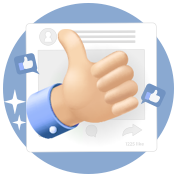
First things first, when setting up your Facebook advertising campaign, you have a variety of options to choose from. One popular option is the boosted post. It allows you to take any of your existing posts and give them an extra boost in terms of visibility. It's a simple and effective way to reach more people who might be interested in your scientific illustrations.
Just select the post you want to promote, set your budget, and define your target audience based on factors like location, age, interests, and even specific scientific topics.
Ads Manager
If you're looking for more advanced advertising options, Facebook offers something called the Ads Manager. It's a powerful tool that lets you create customized ad campaigns tailored to your specific goals and audience. You can choose from different ad formats, such as image ads, video ads, or even carousel ads that showcase multiple illustrations in a single post. This flexibility allows you to experiment with different creative approaches and see what resonates best with your target audience.
One of the key benefits of Facebook advertising is its precise targeting capabilities. As a scientific illustrator, you can take advantage of Facebook's detailed targeting options to ensure your ads are seen by the right people.
For example, you can target users who have expressed an interest in scientific research, biology, or any other relevant scientific fields. This laser-focused targeting helps you maximize the impact of your ads and reach individuals who are genuinely interested in scientific illustrations.
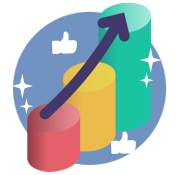
Analytics Tools
Another neat feature of Facebook's advertising platform is its analytics tools. They provide valuable insights into the performance of your ads, allowing you to optimize your campaigns for better results. You can track metrics like impressions, clicks, engagement, and conversions, helping you understand what works and what doesn't.
This data-driven approach empowers you to refine your targeting, creative elements, and messaging to achieve better outcomes with each campaign.
Conclusion
Lastly, don't forget to leverage the power of storytelling in your Facebook ads. As a scientific illustrator, you have the unique ability to captivate your audience with visuals that tell a story.
Whether it's explaining complex scientific concepts through your illustrations or sharing the inspiration behind your artwork, storytelling can create a deeper connection with your audience and leave a lasting impression.
In a nutshell, Facebook's paid advertising options open up exciting possibilities for scientific illustrators to showcase their talent, reach a broader audience, and build a strong online presence.
With the right combination of compelling visuals, precise targeting, and data-driven optimization, you can make very effective ads on Facebook.
Facebook Ad formats
Facebook offers a range of ad formats that allow you to showcase your scientific illustrations and engage with your audience in creative ways. Let's explore some of the popular ad formats that can help you promote your work effectively:
Image Ads:
Image ads are a simple yet powerful format that allows you to showcase your scientific illustrations in a visually compelling manner. Choose high-quality images that capture the essence of your artwork and include a concise and engaging ad copy to convey the value and message behind your illustrations.
Video Ads:
Video ads provide an immersive way to tell the story of your scientific illustrations. You can create captivating videos that showcase your creative process, highlight the details in your illustrations, or even share educational insights related to your work. Consider leveraging the power of motion and audio to bring your illustrations to life and engage your audience on a deeper level.
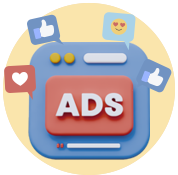
Carousel Ads:
Carousel ads enable you to showcase multiple images or videos within a single ad unit. This format is perfect for displaying a series of scientific illustrations, allowing viewers to swipe through your artwork and discover the depth and variety of your creations. Each image or video can have its own caption, creating an engaging and interactive ad experience.
Slideshow Ads:
Slideshow ads are a dynamic and lightweight alternative to video ads. They allow you to combine multiple images or short video clips into a slideshow format, complete with transitions and music. Slideshow ads are an excellent option if you want to showcase your scientific illustrations in a more dynamic way without the complexity of full-length videos.
Collection Ads:
Collection ads are designed for mobile devices and provide a seamless shopping experience for your audience. This format combines a cover image or video with a grid of related images or products below. For scientific illustrators, collection ads can be useful for showcasing a series of illustrations or providing an interactive gallery experience.
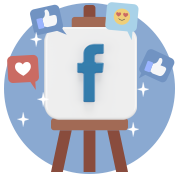
Instant Experience Ads:
Formerly known as Canvas ads, Instant Experience ads are full-screen mobile experiences that offer a highly engaging and immersive ad format. You can use this format to provide a captivating storytelling experience around your scientific illustrations. Combine images, videos, and interactive elements to create a unique and memorable ad that draws viewers in and encourages them to explore further.
Conclusion
These are just a few of the ad formats available on Facebook. Each format offers unique opportunities to captivate your audience, share your scientific illustrations, and drive engagement. Remember to choose the format that best aligns with your campaign objectives and the creative vision you have for showcasing your work. Experiment with different formats to see what resonates best with your target audience and refine your approach based on their response. Happy advertising!
Twitter may be known for its concise and real-time updates, but it also offers paid advertising options that can be valuable for scientific illustrators.
With its vast user base and the ability to engage in conversations, Twitter provides a unique platform to showcase your scientific illustrations and connect with an audience interested in your work.

Promoting Tweets
One of the main advertising options on Twitter is promoting tweets. This feature allows you to amplify your tweets and reach a wider audience beyond your current followers. You can select your most captivating scientific illustrations, tweet them out, and then give them a boost to increase their visibility.
This way, you can ensure that your artistic creations catch the eye of potential new fans, fellow scientists, or even science enthusiasts who are curious about the world of scientific illustration.
Ad Formats
Twitter also offers a variety of ad formats to choose from. For example, you can create video ads that showcase your illustrations in motion or even demonstrate your creative process.
Alternatively, you can utilize image ads to display your captivating artwork directly in users' feeds. These ad formats allow you to make a strong visual impact and effectively communicate the beauty and value of scientific illustration in the limited characters and attention span of Twitter.

Target Users
Now, let's talk about targeting your audience on Twitter. Twitter provides several options to reach the right people who are interested in scientific illustrations. You can target users based on their interests, keywords, hashtags they engage with, or even their location.
By narrowing down your target audience, you can ensure that your paid ads are seen by individuals who have a genuine appreciation for the fusion of art and science that you bring to the table.
Analytics Tools
Twitter also offers analytics tools to help you measure the effectiveness of your advertising campaigns. You can track metrics such as impressions, engagement, and link clicks, giving you valuable insights into how your ads are performing. This data-driven approach enables you to optimize your campaigns and refine your targeting strategies for better results. By analyzing the analytics, you can uncover valuable insights about your audience's preferences and adjust your content and ad strategies accordingly.
Keyword Targeting:
Twitter allows you to target users based on the keywords they use in their tweets, engagements, and searches. You can choose relevant keywords related to scientific illustration, art, biology, or any other topic that aligns with your artwork. This way, your ads will appear when users are actively discussing or exploring those subjects.
Follower Targeting:
Reach users who follow specific accounts related to science, art, or any niche that fits your audience. Targeting followers of influential scientific organizations or renowned artists can help you connect with potential clients and enthusiasts who are already interested in similar content.

Interest Targeting:
Twitter's interest targeting enables you to focus on users who have expressed interest in particular topics or activities. Whether it's scientific research, medical advancements, or art appreciation, you can target users who have engaged with related content.
Behavioral Targeting:
Similar to other platforms, Twitter offers behavioral targeting based on user behavior, interests, and engagement patterns. You can narrow down your audience by selecting specific behaviors that align with your target market, ensuring your illustrations are seen by the right people.
Follower Lookalike Targeting:
Want to expand your reach to a similar audience? With follower lookalike targeting, Twitter will find users who share characteristics and interests with your current followers. This is a fantastic way to attract new fans who are likely to love your artwork.
Tailored Audiences:
Utilizing Twitter's tailored audiences feature, you can target users who are on your email list or have interacted with your website. Reaching out to people who have already shown an interest in your illustrations can boost engagement and conversions.
Event Targeting:
Twitter's event targeting allows you to join conversations around specific events, conferences, or trending topics. If there's a scientific event or hashtag relevant to your work, you can hop in and showcase your illustrations to an engaged audience.
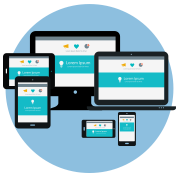
Device and Platform Targeting:
Twitter enables you to target users based on the devices they use, such as mobile phones or desktops. You can also choose to target specific operating systems or platforms to ensure your ads reach the right audience.
Conclusion
In summary, Twitter's paid advertising options offer an exciting opportunity for scientific illustrators to showcase their talent, engage with a passionate community, and build their presence on the platform.
Whether you're promoting your tweets, utilizing captivating ad formats, refining your targeting strategies, or analyzing the performance of your campaigns, Twitter provides the tools to amplify your scientific illustrations and connect with an audience eager to explore the intersection of art and science.
As a scientific illustrator, you might be wondering how to leverage LinkedIn's paid advertising options to showcase your talent and connect with professionals who appreciate your work. Well, let's dive into the world of paid advertising on LinkedIn!

Sponsored Content
LinkedIn offers a variety of advertising formats that can help you make a strong impression in the professional realm. One of the prominent options is sponsored content, where you can promote your scientific illustrations directly in users' LinkedIn feeds. These ads can be in the form of images or even captivating videos that showcase your artwork. By using sponsored content, you can reach professionals who are specifically interested in scientific fields, research, or any other relevant industry.

Sponsored InMail
Another effective advertising option on LinkedIn is sponsored InMail. With sponsored InMail, you can send personalized messages directly to LinkedIn users' inboxes. This allows you to engage in a more direct and targeted conversation with professionals who could potentially be interested in your scientific illustrations.
Whether you're sharing your latest artwork, promoting an upcoming exhibition, or offering your services, sponsored InMail provides an opportunity to connect with your audience on a more personal level.
Precise Targeting Capabilities
LinkedIn's precise targeting capabilities are particularly beneficial for scientific illustrators. You can target your ads based on various criteria, such as job titles, industries, company sizes, or even specific scientific fields. This means you can ensure that your paid ads are seen by professionals who are actively working in or have an interest in the scientific community. By reaching the right audience, you increase the likelihood of generating relevant leads, collaborations, or even clients who appreciate the value of your scientific illustrations.
Analytics
In addition to targeted ads, LinkedIn also offers tools to help you measure the impact of your advertising campaigns. You can access analytics that provide insights into metrics such as impressions, clicks, engagement, and even the demographics of the professionals who interacted with your ads. This data-driven approach allows you to assess the effectiveness of your campaigns and make informed decisions to optimize future strategies. By leveraging these insights, you can refine your targeting and content to better resonate with your audience.
Professional Audience
LinkedIn is also a platform where thought leadership and expertise are highly valued. As a scientific illustrator, you can showcase your knowledge and insights in your LinkedIn posts and articles. By sharing valuable content related to scientific illustration, such as tips, industry trends, or case studies, you can position yourself as an authority in your field. This organic content, combined with your paid advertising efforts, can help establish your credibility and attract a professional audience who recognizes the value of your work.
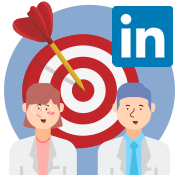
LinkedIn Targeting Options
When it comes to paid advertising on LinkedIn, you have a plethora of targeting options to put your scientific illustrations in front of the right professionals. Let's explore these options:
Job Title Targeting:
LinkedIn allows you to target users based on their job titles and functions. Want to reach scientists, researchers, or medical professionals? You got it! Targeting specific job titles ensures your artwork is seen by those who could benefit from your talent.
Industry Targeting:
With industry targeting, you can narrow down your audience to professionals working in specific industries. Whether it's biotechnology, healthcare, education, or others related to your artwork, you can connect with individuals who share an interest in your field.

Company Size Targeting:
LinkedIn lets you target users based on the size of the companies they work for. This can be valuable if you prefer collaborating with smaller startups or larger research institutions, tailoring your ads accordingly.
Location Targeting:
Similar to other platforms, you can target users based on their geographic location. Whether it's a local community or an international audience, you can refine your targeting to suit your reach.
Skills Targeting:
Want to find professionals with specific skills relevant to your illustrations? LinkedIn's skills targeting feature helps you do just that. Whether it's medical illustration, biology, or any other skill you possess, you can connect with the right audience.
Company Follower Targeting:
Target users who follow specific companies relevant to your niche. This can be beneficial if you aim to connect with employees or clients of certain organizations.
Group Targeting:
LinkedIn groups are communities of professionals with shared interests. You can target users who are members of relevant groups, allowing you to engage with individuals already passionate about your subject matter.
Education Targeting:
LinkedIn enables you to target users based on their educational background. Whether you're interested in reaching university students, researchers, or educators, this targeting option can be invaluable.

Job Experience Targeting:
You can target users based on their years of experience, making sure your artwork reaches professionals at different career stages.
With these powerful targeting options, you can ensure your paid advertising efforts on LinkedIn are reaching the right professionals who can appreciate and benefit from your scientific illustrations.
Conclusion
To sum it up, LinkedIn's paid advertising options provide a unique opportunity for scientific illustrators to showcase their talent, connect with professionals in relevant fields, and position themselves as experts in their niche.
Through sponsored content, sponsored InMail, precise targeting, analytics, and organic thought leadership, you can make a significant impact in the professional world and attract opportunities that align with your artistic goals.
While it may not be the first platform that comes to mind for paid advertising, Pinterest offers valuable options to showcase your scientific illustrations and reach an audience that appreciates visual content. So, let's dive into the world of paid advertising on Pinterest!

Promoted Pins
One of the advertising options on Pinterest is Promoted Pins. These are pins that you pay to boost and reach a wider audience. As a scientific illustrator, you can create captivating pins that highlight your artwork, scientific concepts, or even DIY tutorials related to scientific illustration.
Promoted Pins allow you to appear in relevant search results, category feeds, and users' home feeds, ensuring your artwork catches the eye of potential followers, fellow scientists, or science enthusiasts exploring Pinterest for inspiration.
Targeting
Pinterest is a platform driven by the power of visual discovery and personal interests. Therefore, targeting plays a significant role in maximizing the impact of your paid ads. You can target users based on their interests, keywords they search for, or even specific boards they follow.

By precisely targeting your audience, you can ensure your Promoted Pins are seen by individuals who have a genuine affinity for scientific illustrations and are more likely to engage with your content. This targeting capability allows you to attract the right people and potentially convert them into followers or clients.
Analytics Tools
Pinterest also offers analytics tools that provide insights into the performance of your Promoted Pins. You can track metrics such as impressions, clicks, saves, and engagement, giving you valuable data to evaluate the effectiveness of your campaigns.
By analyzing these analytics, you can understand what resonates with your audience, optimize your content and targeting strategies, and refine your future campaigns. It's like having a roadmap to continually improve and make your paid ads more impactful.
Pinterest Targeting Options
When it comes to paid advertising on this visual discovery platform, you have some fantastic targeting options to showcase your scientific illustrations to the right audience. Let's explore these options:
Keyword Targeting:
Pinterest allows you to target users based on the keywords they search for and use in their Pins and boards. You can choose relevant keywords related to scientific illustration, biology, art, and other topics that align with your artwork. This way, your ads will appear when users are actively looking for content like yours.
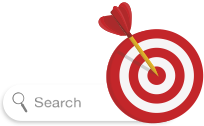
Interest Targeting:
Pinterest users love to explore and discover new ideas, and interest targeting enables you to reach people based on their passions and hobbies. Whether it's science, art, education, or specific subcategories, you can connect with users who have expressed interest in these topics.
Audience Targeting:
Pinterest offers audience targeting options like targeting specific demographics, including age, gender, location, and language. You can refine your audience based on your ideal client or fan profile, ensuring your illustrations resonate with the right people.
Behavioral Targeting:
Pinterest gathers data on user behavior, such as the content they engage with and the Pins they save. With behavioral targeting, you can narrow down your audience based on their interests and activities, reaching people who are more likely to appreciate your scientific illustrations.
Lookalike Audiences:
Want to expand your reach beyond your current followers? Pinterest's lookalike audience feature helps you find users who share similar characteristics and interests with your existing audience. This means more potential clients and fans discovering your creative brilliance!
Device and Platform Targeting:
Pinterest allows you to target users based on the devices they use, such as mobile phones or desktops. You can also choose to target users on specific platforms, ensuring your ads reach them where they are most active.
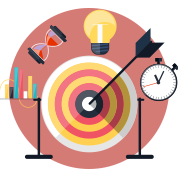
Retargeting:
Pinterest's retargeting feature lets you reconnect with people who have interacted with your Pins or visited your website before. It's an excellent opportunity to remind potential clients of your illustrations and nurture their interest.
Shopping Behavior Targeting:
If you have a Pinterest shop or sell products related to your artwork, you can use shopping behavior targeting. This option helps you connect with users who have engaged with shopping content on Pinterest, turning them into potential customers.
Conclusion
One unique advantage of Pinterest is its longevity. Unlike other social media platforms where posts can quickly get buried in users' feeds, Pinterest has a longer shelf life. Your Promoted Pins can continue to be discovered and saved by users over time, creating a lasting impact and potential for viral exposure. This longevity gives your scientific illustrations an extended opportunity to be seen, shared, and appreciated by a growing audience.
In summary, Pinterest's paid advertising options provide an exciting opportunity for scientific illustrators to showcase their talent, engage with an audience passionate about visual discovery, and gain exposure for their artwork.
Whether it's promoting your pins, leveraging precise targeting, analyzing performance metrics, or creating inspiring boards, Pinterest offers a unique space to connect with a visually-driven audience.
YouTube
YouTube is not only a platform for entertainment and cat videos but also an incredible opportunity for scientific illustrators to showcase our talent and reach a wide audience. With its massive user base and the power of video, YouTube offers paid advertising options that can help you share your scientific illustrations with the world.

TrueView Ads
One of the main advertising options on YouTube is TrueView ads. These are the skippable video ads that play before or during YouTube videos.
As a scientific illustrator, you can create captivating video ads that showcase your artwork, demonstrate your creative process, or even provide educational insights into scientific concepts through visuals. TrueView ads allow viewers to skip the ad after a few seconds, which means you're likely to engage with an audience genuinely interested in your content.
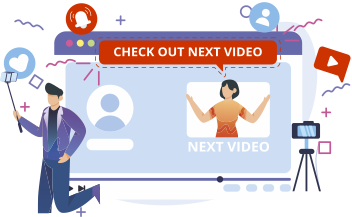
YouTube offers different formats for TrueView ads, including in-stream ads, video discovery ads, and bumper ads. In-stream ads play before or during videos, video discovery ads appear in search results or related videos, and bumper ads are short, non-skippable ads of up to six seconds. Each format provides unique opportunities for you to captivate viewers and generate interest in your scientific illustrations.
When setting up your YouTube ad campaigns, targeting plays a crucial role. You can target your ads based on demographics, interests, or even specific keywords related to scientific fields, research, or educational content. This allows you to reach an audience who are passionate about science and appreciate the beauty and value of scientific illustrations. By delivering your ads to the right people, you increase the chances of attracting viewers who resonate with your artistic vision.
Note: While YouTube TrueView ads offer a fantastic opportunity for scientific illustrators to showcase our talent, one potential disadvantage is the possibility of viewers skipping the ads after a few seconds.
Although this skippable feature allows users to have control over the content they consume, it means that your carefully crafted ad may not have the chance to fully engage and resonate with the audience.
However, it's important to remember that those who choose to watch your ad in its entirety are likely to be genuinely interested in your scientific illustrations, creating a higher chance of making a meaningful connection. So, while some viewers may skip, those who don't can still be valuable potential followers, clients, or collaborators.
Analytics Tools
YouTube also provides robust analytics tools that offer insights into how your ads are performing. You can track metrics such as impressions, views, click-through rates, and audience engagement.
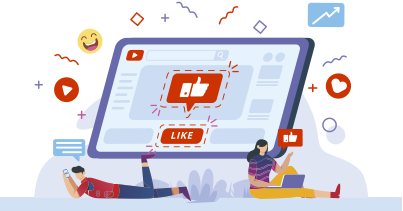
These metrics help you evaluate the effectiveness of your ads and make data-driven decisions to optimize your future campaigns. By understanding what works and what doesn't, you can refine your targeting, creative elements, and messaging to better resonate with your audience.
Conclusion
To sum it up, YouTube's paid advertising options provide a remarkable opportunity for scientific illustrators to showcase their talent, engage with a broad audience, and share the beauty of their artwork.
Through TrueView ads, precise targeting, analytics, you can build your brand, expand your reach, and become a recognized name in the world of scientific illustration on YouTube.
YouTube Targeting Options
When it comes to paid advertising on the world's favorite video platform, you have some incredible targeting options to showcase your scientific illustrations to the right audience. Let's explore these options in a friendly and insightful tone:
Keyword Targeting:
YouTube allows you to target users based on the keywords they use in their search queries and video content. You can choose relevant keywords related to scientific illustration, biology, art, and other topics that align with your artwork. This way, your ads will appear when users are actively seeking content like yours.
Topic Targeting:
Similar to keyword targeting, you can target specific video topics or categories related to your illustrations. Whether it's science, education, art, or any niche you specialize in, this targeting option ensures your ads are shown alongside relevant content.

Interest Targeting:
YouTube gathers data on user interests and engagement patterns. With interest targeting, you can connect with users who have shown an interest in science, art, biology, and other topics relevant to your illustrations.
Demographic Targeting:
Want to reach a specific age group, gender, or location? YouTube's demographic targeting allows you to refine your audience based on these factors, tailoring your ads to connect with your ideal viewers.
Placement Targeting:
With placement targeting, you can choose specific YouTube channels or videos where you want your ads to appear. If there are popular science or art channels that align with your illustrations, this is a great way to get your artwork noticed by engaged audiences.
Remarketing:
YouTube's remarketing feature lets you reconnect with people who have interacted with your channel or videos before. It's an excellent opportunity to remind potential clients of your illustrations and keep your creative brilliance fresh in their minds.
Custom Affinity Audiences:
YouTube allows you to create custom affinity audiences based on users' interests and behaviors. This means you can target users who share similar characteristics and interests with your existing audience, expanding your reach to like-minded viewers.
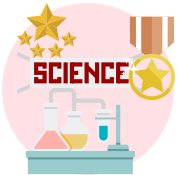
Life Events Targeting:
Target users who are experiencing significant life events like graduating, discoveries or science awards. This can be valuable if your illustrations cater to specific life stages or transitions.
With these captivating targeting options, you can ensure your paid advertising efforts on YouTube are seen by the audience that appreciates your scientific illustrations the most.
